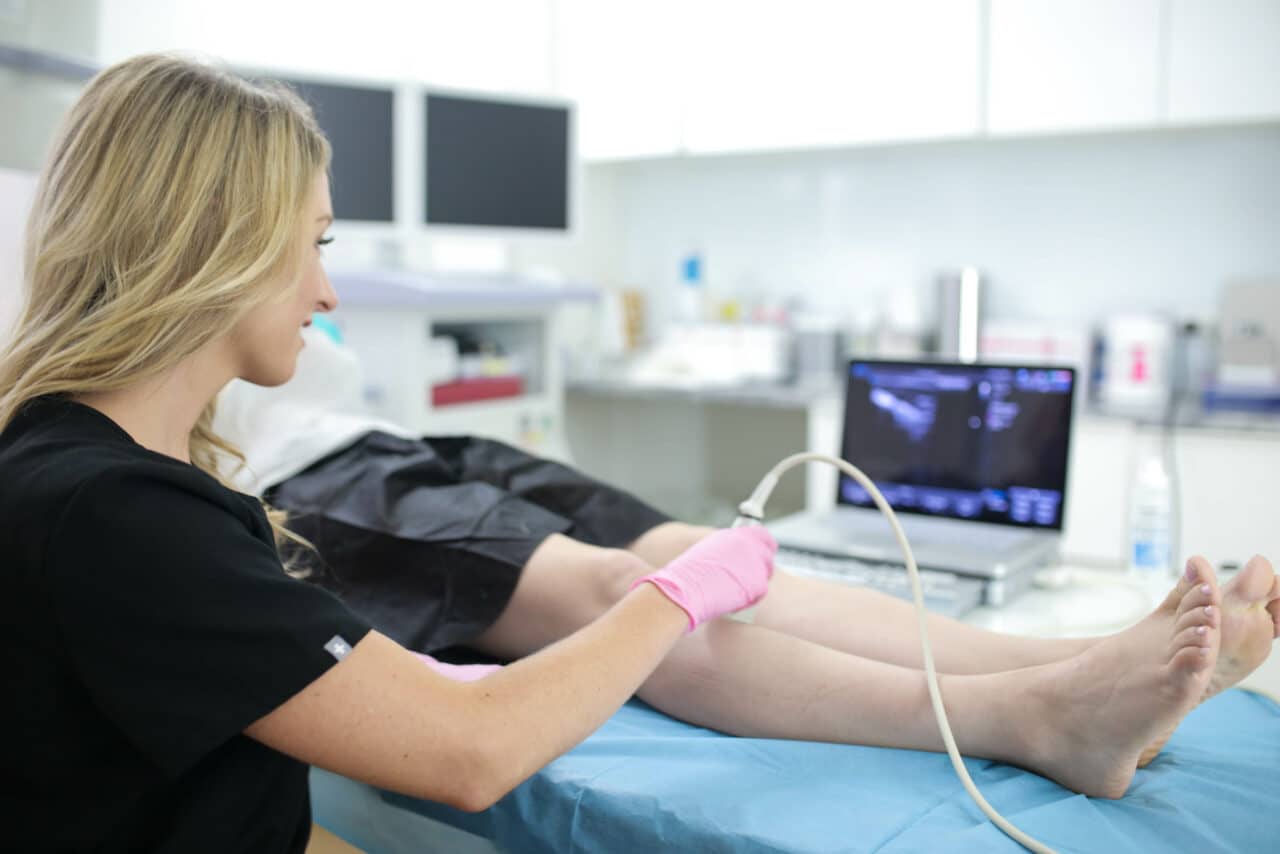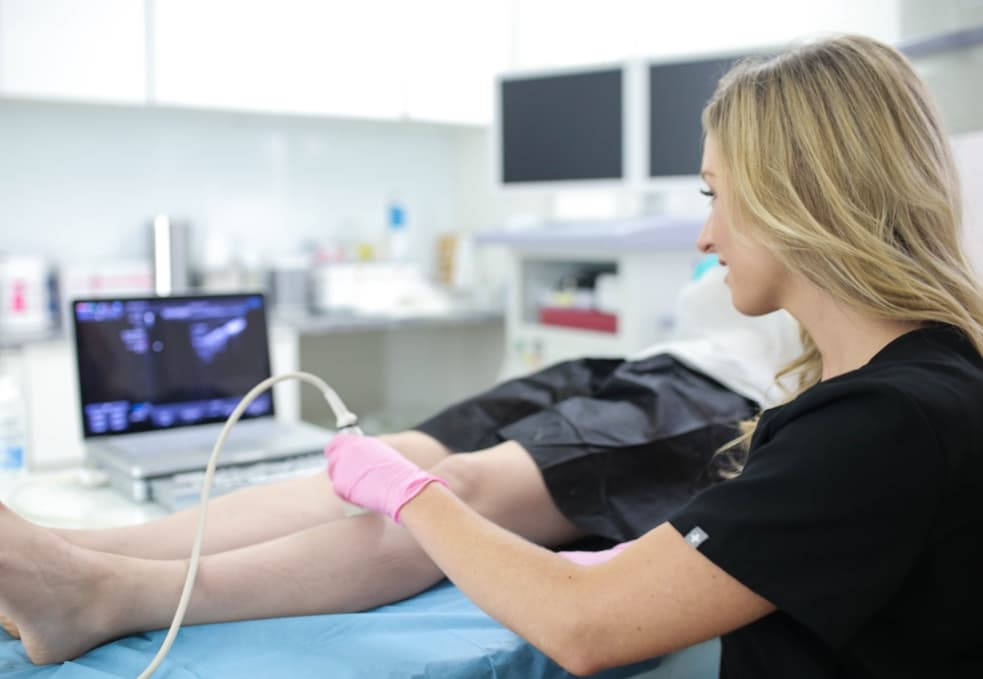Are you tired of those unsightly spider veins marring the beauty of your legs? Long Island Vein Center, led by board-certified vein doctors, specializes in minimally invasive spider vein and varicose vein treatments. We explore natural remedies for spider veins, the importance of diagnosing the root cause, and minimally invasive procedures to help you achieve healthy legs.
Spider Veins and Their Causes
Spider veins, also known as telangiectasias, are tiny, dilated blood vessels that appear close to the surface of the skin. They often resemble a spider’s web or a branching tree, hence the name. Spider veins typically develop when the vein walls weaken or malfunction. Vein walls are designed to help blood flow in one direction—towards the heart.
When these walls lose their elasticity or become damaged, blood can flow backward and pool in the veins, causing them to swell and become visible on the skin’s surface. Maintaining healthy blood circulation is crucial in preventing spider veins. Regular exercise and a balanced diet can contribute to strong vein walls and optimal blood flow. However, if you already have spider veins, don’t worry; there are effective treatments available that do not involve surgery.
Natural Remedies for Spider Veins:
- Exercise Regularly: Physical activity, especially exercises that engage your leg muscles like walking or cycling, can improve blood circulation and reduce the visibility of spider veins.
- Elevate Your Legs: Whenever possible, elevate your legs above heart level. This can help reduce the pressure on the veins in your legs and minimize the appearance of spider veins.
- Wear Compression Stockings: Compression stockings are specially designed to provide gentle pressure to your legs, aiding blood flow and preventing blood from pooling. They are an effective way to manage the symptoms and appearance of spider veins.
- Maintain a Healthy Weight: Being overweight can put additional pressure on your veins, exacerbating spider veins. Maintaining a healthy weight through a balanced diet and regular exercise can help alleviate this pressure.
- Avoid Prolonged Standing or Sitting: If your job or lifestyle involves prolonged periods of standing or sitting, try to take breaks and move around to keep the blood circulating in your legs. Simple leg exercises at your desk can also help.

The Importance of Diagnosis
While natural remedies and lifestyle changes can help manage the appearance of spider veins to some extent, they may not eliminate them completely. To truly address spider veins, it’s essential to diagnose the underlying cause. At Long Island Vein Center, we prioritize accurate diagnosis. This advanced imaging technique allows us to see the blood flow in your veins and identify any abnormalities or underlying conditions contributing to your spider veins.
Minimally Invasive Vein Treatments:
- Sclerotherapy: Sclerotherapy is a popular and minimally invasive treatment for spider veins. It involves injecting a special solution into the affected veins, which causes them to collapse and eventually fade from view. The procedure is quick, typically lasting about 30 minutes, and you can return to your daily activities shortly afterward.
- Endovenous Laser Ablation (EVLA): Endovenous Laser Ablation is a cutting-edge technique used to treat larger varicose veins. During this procedure, a laser fiber is inserted into the affected vein, which emits energy to seal the vein shut. EVLA is highly effective and minimally invasive, with minimal discomfort and a short recovery period.
- Radiofrequency Ablation (RFA): Radiofrequency Ablation is another advanced method for treating varicose veins. It uses radiofrequency energy to heat and seal the vein, redirecting blood flow to healthier veins. RFA is performed on an outpatient basis and allows for a quick return to normal activities.
- VenaSeal: VenaSeal is a treatment that uses a medical adhesive to close the diseased vein. It’s a virtually painless procedure with minimal downtime, making it an attractive option for those seeking non-surgical spider vein treatment.
- ClariVein: ClariVein combines mechanical agitation with a chemical solution to treat varicose veins. It offers excellent results with minimal discomfort and a short recovery time.
- Ambulatory Phlebectomy: Ambulatory Phlebectomy is a procedure used to remove large varicose veins through tiny incisions. It is minimally invasive and requires only local anesthesia. Patients can often resume their daily activities shortly after the procedure.
Spider Vein FAQs
Are spider veins a cosmetic issue, or can they cause health problems?
Spider veins are often considered a cosmetic concern due to their visible appearance on the skin. In rare cases, spider veins may indicate an underlying circulatory problem. It’s essential to consult with a board-certified vein doctor to determine the cause of your spider veins and whether they require treatment for both cosmetic and potential health reasons.
Do spider veins go away on their own?
Spider veins typically do not go away on their own once they have developed. However, natural remedies and lifestyle changes, such as exercise, elevation, and wearing compression stockings, can help manage their appearance and alleviate discomfort. For more effective and lasting results, minimally invasive treatments are recommended.
How long do minimally invasive procedures for spider veins take?
The duration of minimally invasive procedures can vary depending on the specific treatment and the number of veins being addressed. In general, treatments like sclerotherapy and VenaSeal typically take about 30 minutes to an hour to complete. Endovenous laser ablation (EVLA) and radiofrequency ablation (RFA) may take a bit longer, up to 1 hour. These procedures are typically performed on an outpatient basis, allowing you to return home the same day.
Is there any pain associated with minimally invasive vein treatments?
Minimally invasive vein treatments are designed to minimize discomfort for patients. Most procedures are performed under local anesthesia or a mild sedative, ensuring that you are comfortable throughout the process. Some patients may experience minor sensations such as heat or tingling during treatments like EVLA and RFA, but these are generally well-tolerated.
How long does it take to see results after spider vein treatment?
The time it takes to see visible results can vary depending on the treatment and the individual patient. In the case of sclerotherapy, you may notice improvements within a few weeks as the injected veins gradually fade from view. With other treatments like EVLA and RFA, it may take several weeks to a few months for the full results to become apparent as the treated veins are gradually absorbed by the body.
Are there any side effects or risks associated with spider vein treatments?
Minimally invasive spider vein treatments are generally safe and associated with minimal risks. However, as with any medical procedure, there can be potential side effects. Common side effects may include temporary bruising, swelling, or mild discomfort at the treatment site. These side effects typically resolve on their own within a few days to weeks. Serious complications are rare but can include infection or an allergic reaction to the treatment. It’s essential to choose a qualified vein doctor and follow their post-procedure instructions carefully to minimize any risks.
Will insurance cover the cost of spider vein treatments?
Insurance coverage for spider vein treatments can vary depending on your individual insurance plan and the medical necessity of the procedure. While spider veins are often considered cosmetic, if they are causing symptoms or are associated with an underlying medical condition, there may be a possibility of insurance coverage. Long Island Vein Center offers free insurance verification to help you determine your coverage before your first appointment. Our team can assist you in understanding your insurance benefits and financial options.
Can I resume normal activities immediately after spider vein treatment?
Minimally invasive spider vein treatments typically allow for a quick return to normal activities. Most patients can resume light activities on the same day as their procedure. However, it’s essential to follow your vein doctor’s post-treatment instructions, which may include avoiding strenuous exercise and prolonged sitting or standing for a certain period.
How long do the results of spider vein treatments last?
The treated veins will not return, but other veins may become visible in the future. To maintain the best results, it’s advisable to continue with a healthy lifestyle, including regular exercise, weight management, and wearing compression stockings if recommended by your vein doctor. Periodic follow-ups may also be necessary to address any new spider veins that may appear.
Is there an age limit for spider vein treatments?
There is no specific age limit for spider vein treatments. Your vein doctor will assess your individual health and medical history to determine the most appropriate treatment plan. It’s never too late to seek treatment for spider veins, and Long Island Vein Center is here to help you achieve smoother, healthier legs at any stage of life.
Consult Long Island Vein Center for Non-Surgical Spider Vein Treatments
If you’re wondering how to get rid of spider veins without surgery, Long Island Vein Center has you covered. Our board-certified vein doctors specialize in minimally invasive procedures that can effectively treat spider veins and varicose veins. You can find our state-of-the-art vein centers in West Islip, Hampton Bays, Port Jefferson, or Jericho. Don’t let spider veins hold you back; contact us for a consultation and let us help you regain your confidence and comfort.

